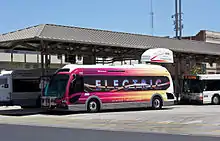
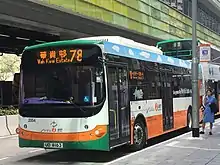
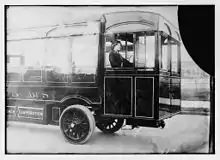
An electric bus is a bus that is propelled using electric motors as opposed to an internal combustion engine. Electric buses can store the needed electricity on board, or be fed continuously from an external source. The majority of buses storing electricity are battery electric buses (which this article mostly deals with), where the electric motor obtains energy from an onboard battery pack, although examples of other storage modes do exist, such as the gyrobus which uses flywheel energy storage. When electricity is not stored on board, it is supplied by contact with outside power sources. For example, overhead wires as in the trolleybus, or with a ground-level power supply, or through inductive charging.
As of 2017, 99% of all battery electric buses in the world have been deployed in Mainland China, with more than 421,000 buses on the road, which is 17% of China's total bus fleet.[1] For comparison, the United States had 300, and Europe had 2,250.[2]
By 2021, Europe had reached 8,500 electric buses, and China's share of electric buses remained at 98%.[3]
History
Principles
Battery
One of the most popular types of electric buses nowadays are battery electric buses. Battery electric buses have the electricity stored on board the vehicle in a battery. As of 2018, battery electric buses could have a range of over 280 km with just one charge, although extreme temperatures and hills can reduce range.[4] The buses are usually used in cities due to their limited range.
City driving involves a great deal of accelerating and braking. Due to that, the battery electric bus is superior to diesel bus as it can recharge most of the kinetic energy back into batteries during braking, which reduces brake wear. The use of electric over diesel propulsion reduces noise and pollution in cities.[5]
When operating within a city, it is important to minimize the unloaded and rolling weight of the bus. This can be accomplished by using aluminium as the main construction material. Composite paneling and other lightweight materials can also be used. According to Finnish bus manufacturer Linkker, its fully aluminium bus construction is about 3000 kg lighter than comparably sized modern steel buses, which have a curb weight of 9500 kg. Reducing weight allows for a greater payload and reduces wear to components such as brakes, tires, and joints, achieving cost savings for the operator.[6]
Charging
| Type (and developer) | Power per receiver (and power pending further development) | Million SEK per km road (both ways) | References |
|---|---|---|---|
| Overhead power lines (Siemens) | 650 kW (1000 kW) | 12.4 | [7]: 140–144 [8]: 23–24, 54 |
| Ground-level power supply through in-road rail (Elways and NCC consortium) | 200 kW (800 kW) | 9.4–10.5 | [7]: 146–149 [8]: 21–23, 54 |
| Ground-level power supply through on-road rail (Elonroad and ABB consortium) | 150 kW (500 kW) | 11.5–15.3 | [8]: 25–26, 54 |
| Wireless power transfer through in-road inductive coils (Electreon) | 25 kW (40 kW) | 19.5–20.8 | [7]: 171–172 [8]: 26–28, 54 |
Buses may be charged at plug in stations, or on special wireless charging pads.[9]
Sweden is studying four different dynamic charging technologies that allow buses and other vehicles to charge while driving on roads and highways. The four tested technologies are overhead wires, in-road rail, on-road rail, and in-road inductive coils.[7][8]
The first solar powered microgrid for charging electric buses in the US is under construction in Montgomery County, MD, and scheduled for completion in fall of 2022.[10]
Capacitors
Buses can use capacitors instead of batteries to store their energy. Ultracapacitors can only store about 5 percent of the energy that lithium-ion batteries hold for the same weight, limiting them to a short distance per charge. However ultracapacitors can charge and discharge much more rapidly than conventional batteries. In vehicles that have to stop frequently and predictably as part of normal operation, energy storage based exclusively on ultracapacitors can be a solution.[11]
China is experimenting with a new form of electric bus, known as Capabus, which runs without continuous overhead lines by using power stored in large on-board electric double-layer capacitors, which are quickly recharged whenever the vehicle stops at any bus stop (under so-called electric umbrellas), and fully charged in the terminus.
A few prototypes were being tested in Shanghai in early 2005. In 2006, two commercial bus routes began to use electric double-layer capacitor buses; one of them is route 11 in Shanghai.[12] In 2009, Sinautec Automobile Technologies,[13] based in Arlington, VA, and its Chinese partner, Shanghai Aowei Technology Development Company[14] are testing with 17 forty-one seat Ultracap Buses serving the Greater Shanghai area since 2006 without any major technical problems.[15] Another 60 buses will be delivered early next year with ultracapacitors that supply 10 watt-hours per kilogram.
The buses have very predictable routes and need to stop regularly, every 5 kilometres (3 mi), allowing opportunities for quick recharging. The trick is to turn some bus stops along the route into charging stations. At these stations, a collector on the top of the bus rises and touches an overhead charging line. Within a couple of minutes, the ultracapacitor banks stored under the bus seats are fully charged. The buses can also capture energy from braking, and the company says that recharging stations can be equipped with solar panels. A third generation of the product, will give 32 kilometres (20 mi) of range per charge or better. [11] Such a bus was delivered by Chariot Motors in Sofia, Bulgaria in May 2014 for 9 months' test. It covers 23 km in 2 charges.[16]
Sinautec estimates that one of its buses has one-tenth the energy cost of a diesel bus and can achieve lifetime fuel savings of $200,000. Also, the buses use 40 percent less electricity compared to an electric trolley bus, mainly because they are lighter and have the regenerative braking benefits. The ultracapacitors are made of activated carbon, and have an energy density of six watt-hours per kilogram (for comparison, a high-performance lithium-ion battery can achieve 200 watt-hours per kilogram), but the ultracapacitor bus is also cheaper than lithium-ion battery buses, about 40 percent less expensive, with a far superior reliability rating.[11][15]
There is also a plug-in hybrid version, which also uses ultracaps.
Future developments
Sinautec is in discussions with MIT's Schindall about developing ultracapacitors of higher energy density using vertically aligned carbon nanotube structures that give the devices more surface area for holding a charge. So far, they are able to get twice the energy density of an existing ultracapacitor, but they are trying to get about five times. This would create an ultracapacitor with one-quarter of the energy density of a lithium-ion battery.[17]
Future developments includes the use of inductive charging under the street, to avoid overhead wiring. A pad under each bus stop and at each stop light along the way would be used.[18]
Drawbacks
As with other electric vehicles, climate control and extremely cold weather will weaken the performance of electric buses. In addition, terrain may pose a challenge to the adoption of electric vehicles that carry stored energy compared to trolleybuses, which draw power from overhead lines. Also, compared to trolleybuses, battery electric buses have lower passenger capacity because the weight of the batteries increases axle loads in jurisdictions where there are legal axle load limits on roads. Even when conditions are favorable, internal combustion engine buses are frequently diesel powered, and diesel is relatively inexpensive per mile. High local utility rates (especially during periods of peak demand) and proprietary charging systems pose barriers to adoption.[19]
Makers and models
School use
North America

In 2014, the first production-model all-electric school bus was delivered[20] to the Kings Canyon Unified School District in California's San Joaquin Valley. The Class-A school bus was built by Trans Tech Bus, using an electric powertrain control system developed by Motiv Power Systems, of Foster City, California. The bus was one of four the district ordered. The first round of SST-e buses (as they are called) is partly funded by the AB 118 Air Quality Improvement Program administered by the California Air Resources Board.
The Trans Tech/Motiv vehicle has passed all KCUSD and California Highway Patrol inspections and certifications. Although some diesel hybrids are in use, this is the first modern electric school bus approved for student transportation by any state.

Since 2015, the Canadian manufacturer Lion Bus offers a full size school bus, eLion, with a body made out of composites. It is a regular production version that is built and shipped in volume since early 2016, with around 50 units sold until 2017.[21]
In February 2021, there were about 300 electric schoolbuses in operation in the United States. That month, Montgomery County, Maryland approved a contract to transition its 1,400 vehicle schoolbus fleet to electric buses by 2035, with the first 25 buses arriving in fall 2021.[22]
The 2021 Infrastructure Investment and Jobs Act included $2.5 billion in funding for electric school buses, to be distributed over five years.[23]
By June 2022, 38 US states were using electric schoolbuses.[24]
In September 2022, EPA funding for electric schoolbuses was doubled, from $500 million to almost $1 billion, due to high demand. The improvement in air quality over diesel powered school buses is expected to be helpful for children with asthma.[25] In addition, the BIDIRECTIONAL Act was introduced in the US Senate, to "create a program dedicated to deploying electric school buses with bidirectional vehicle-to-grid (V2G) flow capability."
Transit use
Transit authorities that use battery buses or other types of all-electric buses, other than trolleybuses:
Asia
UAE
The UAE has recently introduced electric buses. The busses are public buses which serve Dubai.[26]
Malaysia
- Bandar Sunway
- Kuala Lumpur
- Putrajaya[27][28]
- Melaka City[29]
- Selangor[30]
- Kota Kinabalu (coming soon 2018)[31]
- Kota Bharu (coming soon 2018)[32]
- Kuching (on trial since 1 March 2019)[33]
Indonesia
- TransJakarta plans to replace aging fleet with newer electric powered buses. Available candidates are locally made MAB buses and imported BYD buses. Technical trials started by September 2019.[34]
- Paiton Energy took delivery of the first locally produced electric bus made by PT MAB.[35]
India
Highlights:
- On 6 March 2014, India's first intra-city e-bus was launched in Bengaluru.[36]
- On 17 October 2016, Ashok Leyland unveiled India's first indigenous e-bus.[37][38]
- On 8 August 2019, Government of India sanctioned 5,595 e-buses to 64 cities and state transport undertakings.[39][40]
- On 5 September 2019, India's first inter-city e-bus service, from Mumbai to Pune, was launched.[41]
Cities using electric buses include:
Iran
China

As of 2016, 156,000 buses are being put into service per year in China.[52] As of the end of 2020, 378,700 electric buses were in operation, accounting for 53.8% of the total amount of buses.[53]
- Beijing
- Bengbu[54]
- Changsha (BYD x 180 vehicles)[55]
- Haikou (BYD)[56]
- Lhasa, First solar powered public bus in 2015[57]
- Shanghai (capabuses)
- Shaoguan (BYD)[58]
- Shenzhen (BYD x 16,359 vehicles). As of 1 January 2018, every bus in Shenzhen is battery-electric.[59]
- Tianjin (BYD)[60]
- Xi'an (BYD)[61]
- Yancheng[62]
- Bengbu (BYD x 638 vehicles)[63]
Japan
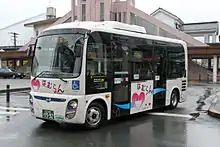
- Community Bus "Hamurun" (Operated by Nishi Tokyo Bus) in Hamura, Tokyo since 10 March 2012[64]
- Community Bus "Sumida Hyakkei" (Operated by Keisei Bus) in Sumida, Tokyo since 20 March 2012[65]
- Kitakyushu City, Japan.[66]
Singapore
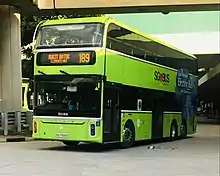
- Singapore's first fully electric bus was launched in 2016 on a trial basis by Go-Ahead Singapore.
- On 24 October 2018, the Land Transport Authority procured 60 fully electric buses — 20 BYD K9 buses, 20 ST Engineering-Linkker Electric Buses, 10 Yutong E12 single-decker buses and 10 Yutong E12DD double-decker buses, for $50.64 million total.
- On 17 October 2019, SMRT Buses began deploying BYD C6 electric minibuses on bus service 825, marking the launch of Singapore's first fully electric public minibuses.
- On 3 April 2020, Go-Ahead Singapore, Tower Transit Singapore and SMRT Buses began deploying Yutong E12 electric buses, marking the start of the rollout of the 60 fully electric buses procured by the Land Transport Authority.
- On 29 July 2020, SBS Transit began deploying BYD K9 electric buses.
- On 27 October 2020, Go-Ahead Singapore, Tower Transit Singapore and SMRT Buses began deploying Yutong E12DD electric double-decker buses, marking the launch of Singapore's first fully electric double-decker buses.
- On 25 August 2021, SBS Transit and SMRT Buses began deploying Linkker LM312 electric buses, marking the launch of Singapore's first Opportunity Charging Electric buses.[67]
South Korea
- Seoul has 15 electric buses nicknamed "Peanut Bus" for their shape, transferring people from subway stations in downtown to the N Seoul Tower, circulating Mt. Namsan.[68]
- Seoul's Gangnam District will have 11 electric buses in operation from February 2013 and 270 electric buses by the end of 2013, increasing to 400 buses by 2014.[69] At least 3,500 electric buses will be introduced in phases until 2020, which will account for half of Seoul's bus fleet.[70]
- Gumi will have the world's first wireless electric bus, known as Online Electric Vehicle, in operation from July 2013 developed by KAIST. Electricity is wirelessly fed into the bus from the tracks.[18][71]
- Pohang will have automatically battery switching electric buses in operation from July 2013. Unlike conventional plug-in charging buses, the battery pack is automatically swapped with a fully charged one before complete drainage.[72]
Thailand
- Thai Smile Bus Co., Ltd.[73]
Qatar
741 electric buses are operated by Mowasalat (Karwa) the country's public transit system.[74]
Vietnam
Europe
Belarus
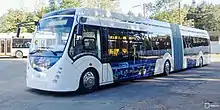
- Е433 «Vitovt Max Electro» (Minsk)[75]
- E420
- E321
Belgium
The electrification of Belgium's buses is on a strong upward trend:
- Flanders: At the end of 2019 De Lijn operated 2,295 buses, of which 368 were hybrids. De Lijn introduced its first six fully electric buses in 2020, with seven more to follow. An order for 970 electric buses, which had been cancelled, is to be reissued.[76] The Flemish coalition agreement states that city centres must be operated emission-free by 2025 and that all buses in Flanders must be zero-emission by 2035.[77]
- Wallonia: At the end of 2019, OTW operated 1,769 of its own buses, of which 309 were hybrids.
- Brussels: At the end of 2019 STIB/MIVB operated 800 buses, of which 184 (23%) of them were hybrids. Tenders for 50–100 electric buses are being prepared and the hydrogen option is also being examined.
As for fully electric buses, Belgium only had 4 in operation in 2019.[78]
Bulgaria
- Since 2018 Sofia operates a fleet of 20 Yutong battery electric buses
- Since 2020 Sofia operates a fleet of 15 Chariot-Higer supercapacitor-based electric buses. In 2021 the fleet was supplemented by 30 more electric vehicles of this type.
- Since February 2021 Kazanlak operates a fleet of 7 Alfabus battery electric buses
- Since February 2021 Gabrovo operates a fleet of 3 Chariot-Higer supercapacitor-based electric buses, delivered by Chariot Motors.
- Since July 2021 Ruse operates a fleet of 20 SOR battery electric buses.
Turkey
Finland
- Espoo Cobus EL2500 (bus 11 Friisilä-Tapiola Centre)
- Espoo (Linkker 2 vehicles, Bus 11 line Tapiola centre-Friisilä)[79]
France
Germany
- Berlin: Berlin public transport(Berliner Verkehrsbetriebe (BVG)) operator orders 90 new electric buses. It is still unclear which manufacturer the vehicles were ordered from. As the local German newspaper, the Tagesspiegel writes, the order is said to have gone to the Dutch electric bus and charging infrastructure manufacturer Ebusco. The delivery of all buses is scheduled for the end of 2022. This will increase BVG's fleet to 228 electric buses.[81]
- Munich: The Dutch electric bus manufacturer Ebusco has received a follow-up order from public transport operator Stadtwerke München in Germany. The order is for 14 electric 18-metre buses of the type Ebusco 2.2. Delivery is scheduled for the first half of 2023. "After the 12-metre buses from Ebusco met the range expectation, we are looking forward to taking its big brother on the road," says Veit Bodenschatz, managing director and Head of Bus Operations at Münchner Verkehrsgesellschaft (MVG). In Munich, the aforementioned twelve Ebusco 2.2 are already in use as solo buses in the 12-metre version, as well as two Ebusco 3.0, which, as reported, were recently handed over to Stadtwerke.[82]
- Konstanz: Stadtwerke Konstanz has purchased six new electric buses as a prelude to the long-term conversion of its bus fleet. The new Mercedes eCitaro e-buses have already been delivered and are scheduled to enter service on lines 6 and 14 in February. The municipal utility had already announced in October 2020 that it intended to purchase six e-buses in 2021 and to stop buying diesel buses in the future. The order was then placed with Mercedes-Benz last year, and the red-painted eCitaro buses have since arrived in Constance.[83]
Great Britain
- As of August 2023, 1000 zero-emission buses operate in London, the 2nd largest fleet in Europe.[84][85]
- Stagecoach North Scotland operates 5 Optare solo EV[86]
- Strathclyde Partnership for Transport runs battery-powered electric buses on one route in Glasgow, between George Square and the Transport Museum.[87]
- Bristol: Route 72 from City Centre to Frenchay UWE campus[88]
- Durham: Cathedral and City Centre loop[89][90]
- Milton Keynes: Route 7[91]
- Greater Manchester: Stagecoach plans to buy 105 electric buses for use in the Greater Manchester area by 2020.[92]
- Guildford introduced a fleet of electric buses on its Park and Ride services on 7 January 2019.[93]
- Newcastle: Go North East started operation of Yutong E10s under the Voltra brand name on routes 53 and 54 in June 2021.
- Nottingham: CT4N operate a fleet of electric Optare Solos, Versas and BYD K9UR buses on contract services for Nottingham City Council
- Since July 2020, National Express West Midlands has been operating 19 fully electric ADL/BYD double deckers on the 6 route from Birmingham to Solihull, via Hall Green and Shirley
- Since August 2020, National Express Coventry has been operating 10 fully electric ADL/BYD double deckers on the 9/9A route between University Hospital and Finham, via Coventry rail station and Coventry Pool Meadow bus station.[94]
Italy
- Azienda Trasporti Bergamo — Bergamo, Italy[95]
- Gruppo Torinese Trasporti — Turin, Italy, uses small capacitor vehicles on two routes ("Star1" and "Star2") through city center since early 2000.
- Azienda Trasporti Milanesi, the company responsible for public transportation in Milan, has ordered 250 electric buses in 2019, and plans to be fully electrified by 2030. As of 2019, there are 25 electric buses, 100 hybrid buses and 3 hydrogen buses in operation in the city.[96]
Israel
- Israel has more than 100 electric buses, out of a fleet of ~13,000 buses[97]
- Dan, a public transport operator in Tel Aviv launched e-bus operation on 15 September 2016 with five Chariot ultracapacitor e-buses on Route 4. After 2017, Dan put other four Chariot e-buses with 32kWh ultracapacitors into service. In late 2018 and 2020 it put 19 and 10 new ultracapacitor e-buses with 40 kWh ultracapacitors into service. By late 2020, 37 Chariot electric buses operated in Tel Aviv.
Lithuania
- Municipal public transport company "Klaipėdos autobusų parkas", Klaipėda, started using locally produced Dancer electric buses on Route 8 in April 2020.[98]
- Municipal public transport company "Kauno autobusai", Kaunas, operates electric trolleybuses since 1965. As of April 2020, the company operated around 100 Solaris Trollino 12AC and several Berkhof Premier AT18 trolleybuses on a network of 17 lines.
- Municipal public transport company "Tauragės autobusų parkas", Tauragė in March 2019 announced the acquisition of electric Iveco Rosero 70C18 and Solaris Urbino Electric buses. A total of 5 electric buses were launched on three suburban routes in early 2020.
- Municipal public transport company "Susisiekimo paslaugos", Vilnius, began using four Karsan Jest Electric buses on Route 89 in September 2019, making this route fully electric. This is an addition to the network of 19 routes, operated with 279 electric trolleybuses, mostly Solaris Trollino 15AC, Solaris Trollino IV 12, Škoda 14Tr, Škoda 14ТrМ, Škoda 15Тr and Amber Vilnis 12 AC, as of April 2020. Vilnius trolleybus network was launched in 1956.
Netherlands

The Netherlands has the most electric buses of any European country. At the end of 2019 the number had reached 770, or 15% of the entire Dutch fleet of 5,236 buses. This is expected to grow to 1,388 by the end of 2020. In the provinces of Groningen and Drenthe 47% of buses are electric, in Limburg 37% and in North Holland 31%. The main manufacturers are VDL (486 of the existing 770) Ebusco (110), Heuliez (49) and BYD (44).[99] In 2015, the Dutch public transport authorities agreed to buy only emission-free buses from 2025 onwards, and to make the entire fleet emission-free by 2030.[100]
Amsterdam
In December 2018 GVB ordered 31 electric buses from VDL, with an option for 69 more buses. They entered service on 2 April 2020 on routes 15, 22 and 36, and are
- 9 Citeas SLF-120 Electric, with 216 kWh batteries
- 22 articulated Citeas SLFA-180 Electric, with 288 kWh batteries
The buses recharge through a pantograph from 31 8 MW Heliox fast chargers at the Garage West depot on Jan Tooropstraat and seven 45 kW chargers at Sloterdijk station.[100][101] EBS (Egged Bus Systems), which primarily serves Waterland to the north of Amsterdam, has also ordered 10 electric buses from VDL.[101]
Arnhem
Arnhem has the Netherlands's only trolleybus network, which opened in 1949 and operates 46 articulated buses on six routes.
Eindhoven
On 11 December 2016 Hermes introduced 43 fully electric VDL 18-metre buses in Eindhoven, driving a daily distance of 400 km each. In 2017 this was the biggest all-electric bus operation of Europe.
Haaglanden
For use on its Haaglanden network EBS is using 116 electric buses:
- 23 VDL Citea LLE 99 Electrics for Zoetermeer and Delft (10-metre [32 ft 9+3⁄4 in])
- 93 Mercedes-Benz Citaro NGT Hybrids for other routes (83 12-metre [39 ft 4+1⁄2 in] and 10 18-metre [59 ft 5⁄8 in] articulated)[102]
Rotterdam
In 2018 Rotterdam ordered 55 electric buses from VDL[101] and in 2019 obtained a European Investment Bank loan to buy a further 105 electric and 103 hybrids.[103]
Schiphol
Since March 2018, 100 VDL Citea articulated electric buses operated by Connexxion have served Schiphol airport. The buses have a battery capacity of 170 kWh and a range of 80 kilometres. They are charged during the day by Heliox 450 kW fast chargers, taking between 15 and 25 minutes. Overnight, 30 kW slow charges take 4–5 hours.[104] They are powered by 100% renewable energy, from wind power and solar panels at the depots.[105] The buses serve two different networks:
- R-net: routes 242, 342, 347 and 347 with a total length of 78 km
- Schipholnet: routes 180, 181, 185, 186, 187, 190, 191, 194, 195, 198, 199 and 287.
Since 2016 a fleet of 35 BYD 12-metre battery buses has provided airfield services.[106]
Utrecht
In Utrecht, Qbuzz has operated electric buses since 2017.
Waddeneilanden
In April 2013 six all-electric BYD buses operated on the island of Schiermonnikoog. Arriva started running 16 electric buses on Vlieland, Ameland and Schiermonnikoog.
Poland
- Kraków (Cracow): In January 2016, first 2 Solaris Urbino 12 electric buses were delivered by Solaris Bus & Coach. In September 2016, further 4 Solaris Urbino 8,9 LE electric buses were delivered by the same manufacturer. A roadside charger was installed at a bus stop on Pawia street.
- Warszawa (Warsaw): In June 2015, Solaris Bus & Coach delivered 10 Solaris Urbino 12 electric buses. They are running on route 222. A further 20 electric buses are on order, first 10, manufactured by Ursus Bus, due to be delivered in summer of 2017 and further 10 Solaris Urbino 12 electrics by end of March 2018. There are also plans to purchase further 130 electric buses by 2020. 19 termini will be equipped with chargers, allowing buses to be topped-up using roof-mounted pantographs.[107][108][109]
- Zielona Góra: In October 2017 MZK Zielona Góra order 47 electric buses Ursus City Smile 12E manufactured by Ursus Bus.[110]
- Stalowa Wola: In September 2017 ZMKS Stalowa Wola order 10 electric buses Solaris Urbino 8,9 LE electric manufactured by Solaris Bus & Coach.[111]
As of 2022, around 700 electric buses—not counting trolleybuses—from different manufacturers are operated in Poland, and there are plans to obtain another few hundred. The largest fleets are located in Warsaw (162 buses), Kraków (78 buses), Poznań (59 buses), Jaworzno (44 buses) and Zielona Góra (43 buses).[112] Trolleybuses operate in Gdynia, Lublin and Tychy, with around 250–300 in service.
Romania
- Cluj-Napoca: In May 2018, Solaris Bus & Coach delivered 11 Solaris Urbino 12 electric buses to the local operator CTP Cluj, Cluj-Napoca becoming the first city in Romania to use battery-electric buses in public transport. (Electric buses in the form of trolleybuses were already in use in Cluj and several other Romanian cities.) Another 19 buses are expected to be delivered in the future. The municipality's mayor, Emil Boc, announced that Cluj will have a fully electric public transport system by 2025.[113]
- Brasov: In 2019 -2021, SOR delivered 60 electric buses ENS12 and EBN8 to Brasov. Also in 2022, Karsan delivered 12 articulated buses type E-ATA18.
- Iasi: Solaris delivered in 2022 20 Solaris Urbino 12 Electric.
- Slatina : Operates since 2022 a fleet of 8 SOR ENS 12 and 10 Karsan E-ATA 10.
- Craiova : Operates since 2020, 20 Solaris Urbino 18 electric buses.
- Turda : Operates since late 2019 a fleet of 20 SOR electric buses, 10 SOR EBN 11 and 10 SOR EBN 9.5.
- Alba Iulia : Operates 13 SOR ENS 12 electric buses since 2023.
- Ploiesti : Operates 9 SOR ENS 12 since 2023.
- Suceava : Operates both 15 Solaris Urbino 12 Electric and 25 ZTE City Roamer.
- Zalau : Operates 10 SOR ENS 12 and 10 SOR EBN 9.5 since 2020.
- Pitesti: Operates 40 Solaris Urbino 12 Electric.
- Drobeta Turnu-Severin will start operating 6 SOR EBN 11 electric.
- Constanta operates 20 BYD K9U electric buses.
- Bistrita operates 10 SOR EBN 9.5 electric buses.
- Buzau operates 4 Temsa Avenue Electron 12 and 9 BYD K9U Electric Buses.
- Arad operates 10 Temsa electric buses, 5 Temsa Avenue Electron 12 and 5 Temsa MD9 LE.
- Sibiu operates 5 Karsan Jest Minibuses and 9 Solaris Urbino 12 Electric.
- Mangalia operates 10 Karsan E-ATAK 8.5 meters.
In Romania, except for the cities above, are operating more than 350 electric buses all over Romania, and their number is expanding. Most of the electric buses in Romania are deliveres by : Solaris ( Poland), SOR ( Czech Republic), Karsan ( Turkey), Temsa ( Turkey), BYD ( China), ZTE Bus in cooperation with BMC Trucks and Bus (Romania). The list above is incomplete, as more tenders for electric buses are being launched.
Russia

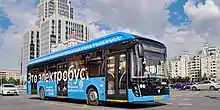
- In 2014 battery-powered trolleybuses started operating in Chelyabinsk. The remodeled vehicles can run up to 30 km on routes that lack wires.[114]
- In 2018 electric buses were introduced in Moscow. The city government has signed contracts with GAZ and Kamaz automobile companies to supply the city with 200 fast-charging electric buses. After 2021, only electric vehicles are to be purchased.[115] With the purchase of the 100th electric bus in May 2019, Moscow became the city with Europe's largest electric bus fleet. As of March 2022, over 1000 electric buses are in operation in Moscow.[116] Drive Electro company had provided batteries for 400 out of those 600 electric busses.[117][118][119]
- Russian based Electric bus manufactures are LiAZ (GAZ Group), Trolza (PC Transport Systems) and Kamaz.[120][121]
Serbia
- In 2016 GSP Belgrade, the public transport operator of city of Belgrade, launched dedicated electric bus line equipped exclusively with 5 electric buses, delivered by Chariot Motors.[122] The line has a total length of 7.9 kilometres one-way and 13 bus stops.
- In 2022, the Belgrade public transport operator GSP Beograd put its 10 new Chariot e-buses into commercial operation, delivered by Chariot Motors and DAT holding.
Spain
- Empresa Malagueña de Transportes (EMT), S.A.M[123]
- Empresa Municipal de Transportes de Madrid 20 all-electric and 20 hybrid diesel-electric buses[124] and since February 2017 one Iziar ie2.
- Councillor for the Environment, Figueres[125]
- León: Minibus Tecnobus Gulliver in El Ejido[126][127]
- Seville[126]
Sweden
Switzerland
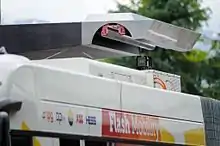
- transport public genève (tpg) introduce TOSA Flash Mobility, Clean City, Smart Bus[130] a new system of mass transport with electric "flash" recharging of the buses at selected bus stops.[131]
North America
Aruba
- Oranjestad (BYD)[132]
Canada
British Columbia
- Vancouver electric buses have been in operation since 1948, TransLink operates 260 of them.
- Victoria – CVS Tours currently deploys North America's first all-electric double decker bus made by GreenPower Motor Company.[133]
Ontario
Québec
- Réseau de transport de la Capitale, Quebec City's public transit authority has integrated 8 electric buses to its fleet in 2008 to serve the Old City.[136] The Tecnobus Gulliver buses can carry up to 20 passengers and runs on $3.25 worth of electricity per day.[137]
- Société de transport de Montréal, Montreal, bus fleet going all-electric or hybrid by 2029.[138] 2017 – Cité-Mobilité project : 7 electric bus on line 36 with high-speed charging.[139]
United States

In November 2019, orders for new electric buses had outpaced manufacturing capacity.[140]
The 2021 Infrastructure Investment and Jobs Act included $2.5 billion in funding for electric school buses, to be distributed over five years.[23] By June 2022, there were commitments to 12,275 electric school buses in 38 states.[141]
A 2022 study by National Grid and Hitachi Energy indicates that installing charging infrastructure for fleet electrification will require location-specific upgrades to the US electrical grid.[142][143]
In 2022, there were 5,269 battery electric buses.[144]
Cities using electric buses include:
- Anaheim, CA
- Atlanta, GA (at Emory University)
- Cambridge, MA
- Chattanooga, TN – CARTA[145]
- Chicago, IL
- Colorado Springs, CO
- Dallas, TX[146]
- Dayton, OH
- Denver, CO – RDT Free MallRide[147]
- Frederick, MD
- Greenville, SC
- Gulfport, MS[140]
- Hampton, VA
- Indianapolis, IN
- Ithaca, NY
- Lexington, KY
- Los Angeles, CA
- Louisville, KY
- Miami Beach, FL
- Mobile, AL
- Nashville, TN
- New Haven, CT
- New York, NY
- Pomona, CA
- Portland, ME
- Portland, OR
- Philadelphia, PA
- Providence, Rhode Island
- Reno, NV
- Santa Barbara, CA
- San Antonio, TX
- San Diego, CA[148]
- San Francisco, CA
- Seattle, WA
- Seneca, SC
- Spokane, WA
- Stockton, CA
- Tallahassee, FL
- Worcester, MA
- Wichita, KS
California
Since 2000, the California Air Resources Board has had a Fleet Rule for Transit Agencies, which requires transit agencies to reduce emissions.[149] In 2018 it issued the Innovative Clean Transit rule, which requires all new transit buses purchased after 2029 to be zero-emissions buses.[150]
Long Beach, California and the Antelope Valley Transit Authority charge some of their buses on special wireless charging pads located along bus routes.[9]
By 2019, more than 200 e-buses were in service in California. Several hundred more e-buses for California were in backlogged orders.[140]
Total operating cost per mile
NREL publishes zero-emission bus evaluation results from various commercial operators. NREL published following total operating cost per mile: with County Connection, for June 2017 through May 2018, for an 8-vehicle diesel bus fleet, the total operating cost per mile was $0.84; for a 4-vehicle electric bus fleet, $1.11;[151] with Long Beach Transit, for 2018, for a 10-vehicle electric bus fleet, $0.85;[152] and with Foothill Transit, for 2018, for a 12-vehicle electric bus fleet, $0.84.[153][154]
States without plans for e-buses
In 2019, "only five states, Arkansas, New Hampshire, North Dakota, South Dakota and West Virginia, ... [had] no transit agencies planning to operate electric buses or hydrogen fuel cell buses."[140]
Oceania
Australia
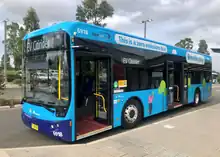
Australian Capital Territory
- In September 2017, Transport Canberra began operating two electric buses based at its Tuggeranong depot.[155]
- In December 2020, the reelected ALP government announced that it would purchase 90 new electric buses for in 2021 with the aim to have Canberra's entire bus fleet converted to electric by 2024. Upgrades to bus depots would be completed during this time with Woden bus depot being the first to be upgraded.[156]
New South Wales
- In 2016 Carbridge procured a fleet of six BYD electric buses to replace its diesel car park shuttles at Sydney Airport.[157]
- Transport for NSW began a trial of electric buses on the South Coast before conducting a more expansive trial in region 6 in Sydney in 2019.
- In December 2020, the NSW government announced that it would roll out 120 electric buses across Sydney in 2021. Transport minister Andrew Constance also announced a goal to transition the entire state's 8,000 strong bus fleet to battery electric by 2030.[158]
- Sydney, November, 2021: A new rollout of zero emissions buses has begun as part of an ARENA-supported project. The buses will be charged from a solar array installed on the roof of the Leichhardt depot, storing energy in onboard batteries capable of holding up to ten times as much energy as an electric car.[159]
Queensland
- Brisbane's new Brisbane Metro rapid bus system will use a fleet of 60 bi-articulated electric buses that visually resemble light rail vehicles. These buses will be supplied by Swiss-based manufacturer Carrosserie Hess.[160]
- Kinetic has 11 electric buses on the Sunshine Coast, and 26 total in Cairns and Gold Coast in contracts to Translink Qld
Western Australia
- In July 2020, the Public Transport Authority announced that it would trial four Volvo electric buses on Perth's Joondalup CAT bus route.[161]
Victoria
- Melbourne's first fully electric bus began carrying passengers on Transdev Melbourne route 246 in October 2019. The body construction and fit out for the new bus was carried out in Dandenong by Volgren.[162]
New Zealand
- In April 2018, Auckland Transport began a trial with two electric Alexander Dennis Enviro200 buses.[163] These buses run on the City Link service around Auckland's central business district. The trial continues as of February 2019.
- In July 2018, Tranzurban introduced 10 electric double Decker buses in Wellington. 22 more buses are expected to be in service by 2021. NZ Bus have ordered 67 single Decker buses which will enter service between 2021 and 2023.
- In June 2019, Red Bus introduced three Alexander Dennis Enviro200 bodied BYD K9 electric buses for use on the 29 Airport route.[164][165]
South America
Brazil
- Sao Paulo (BYD)[166]
- Campinas (BYD)
- Sao Jose dos Campos (BYD)
Chile
Colombia
- Bogota Transmilenio and the Sistema Integrado de Transporte de Bogotá with 1485 electric buses, made by BYD and Yutong.[171][172][173]
Uruguay
- Montevideo (BYD × 200 Vehicles),[174] (Yutong × 10 vehicles, Higer × 1 vehicle)
- In 2013 Abriely imported for Uruguay-Argentina tourist transport operator Buquebus an BYD K9 for a tourist line in Colonia del Sacramento. That line was unsuccessful, and the bus was sold in 2016 to Montevideo's biggest urban and sub-urban transit bus operator CUTCSA who numbered it ad the 2016 ("outside" the 1-1136 the covered by the 1136 units of the operator). In that service the bus proved that while constrained and limited by the battery capacity in the longer lines, it could easily work in the shorter lines; so in 2020 CUTCSA acquired 20 BYD K9s for use on three exclusive electrical lines:(CE1 Ciudad Vieja-Tres Cruces, replacing the CA1 line. (CE = "Centrica Electrica"; CA was "Centrica Accesible" or "Accesible Centrical") It was the first exclusive low floor bus line in Uruguay and a lower fare,E14 Ciudad Vieja-Pocitas replacing the 14 lines, and,the DE1 Ciudad Vieja-Carrasco line replacing the D1 line. (D=means Differential and refers to it being faster than another pre-existing line)
- In 2020 the other three Montevidean bus operators COETC, UCOT and COME bought respectively 4, 3 and 3 Yutong E12LF (also known as ZK6128BEVG) for use in non-exclusive lines (and in COETC and UCOT cases also the CE1)
- In the first semester of 2023 CUTCSA started testing a Higer KLQ6126GEV numbered as 2023:first in the electric exclusive lines,later in multiple lines affiliated to the groupings of lines known as "Linea A", and finally in the "Interdiferencial" lines (Interdiferential lines composing of both Differential and inter-departmental lines) in preparation for the acquisition of electric units to replace around 25% of the fleet of 1140 buses.
- On 7 May 2023 Claudio Techera, a reporter of the magazine "Transporte Carretero"(Road Transport), uploaded to his personal YouTube channel an interview with Álvaro Gomez, Director of PRIMATUR, the official importer of Yutong in Uruguay, in which Gomez confirmed that the cooperative COETC and the company COME S.A. had signed contracts for the acquisition of 10 Yutong U12 buses by each operator, with the possibility of modifying the side windows to make it easier to replace glass broken by stones or bullets. On 11 June, the cooperative UCOT confirmed the purchase of 10 U12 units after a directors' meeting.
- Canelones-Las Piedras (Ankai × 6). Since 2019 the bus operator Compañia del Este o Codeleste has been buying Ankai electric low-floor buses for use in general lines of different models.
- Durazno-Durazno Department (Ankai × 2). The bus operator Nossar (which has operated urban and suburban bus services in the department since 1925, and interdepartmental services since 1987) bought 2 Ankai units for urban services, these units arrived at the Montevideo port and were driven about 200 km to Durazno by members of the Nossar family (owners of Nossar since its foundation).
See also
References
- ↑ "Electric Buses Are Hurting the Oil Industry". Bloomberg.com. 23 April 2018 – via www.bloomberg.com.
- ↑ "The U.S. Has a Fleet of 300 Electric Buses. China Has 421,000". Bloomberg.com. 15 May 2019. Retrieved 28 September 2020.
- ↑ "Electric bus, main fleets and projects around the world". Sustainable Bus. 12 July 2022. Retrieved 24 July 2022.
- ↑ "The Verdict's Still Out on Battery-Electric Buses". Citylab. 17 January 2019.
- ↑ "Shenzhen's silent revolution: world's first fully electric bus fleet quietens Chinese megacity". The Guardian. 12 December 2018.
- ↑ "Lightweight bus construction". Linkker. Archived from the original on 4 March 2016. Retrieved 25 May 2016.
- 1 2 3 4 5 Bateman, D; et al. (8 October 2018), Electric Road Systems: a solution for the future (PDF), TRL, archived from the original (PDF) on 3 August 2020, retrieved 10 February 2021
- 1 2 3 4 5 6 Analysera förutsättningar och planera för en utbyggnad av elvägar, Swedish Transport Administration, 2 February 2021
- 1 2 Kennedy, Sarah (5 December 2019). "Electric buses charge up quickly using new wireless systems". Yale Climate Connections. Retrieved 8 December 2019.
- ↑ Gupta, Gaya (9 July 2022). "Electric buses to tap solar power using new method for D.C. region". Washington Post. Retrieved 10 July 2022.
- 1 2 3 "Next Stop: Ultracapacitor Buses". Technology Review. Archived from the original on 8 April 2012. Retrieved 28 July 2010.
- ↑ (in Chinese, archived page)
- ↑ "SINAUTEC, Automobile Technology, LLC". Sinautecus.com. Retrieved 28 July 2010.
- ↑ "Aowei Technology". Aowei.com. Archived from the original on 25 January 2010. Retrieved 28 July 2010.
- 1 2 "Ultracapacitor Buses Work... As Long as You have Lots of Quick-Charge Stations". TreeHugger. Retrieved 28 July 2010.
- ↑ "Sofia – Chariot Motors". chariot-electricbus.com.
- ↑ "Next Stop: Ultracapacitor Buses". Technology Review. Archived from the original on 8 July 2011. Retrieved 28 July 2010.
- 1 2 "OLEV". Archived from the original on 31 December 2013.
- ↑ Groom, Nichola (11 December 2017). "U.S. transit agencies cautious on electric buses despite bold forecasts". Reuters. Retrieved 7 August 2018.
- ↑ Dechert, Sandy (5 March 2014). "New All-Electric School Bus Saves California District $10,000+ Per Year". cleantechnica.com. Retrieved 20 August 2018.
- ↑ "Archived copy". Archived from the original on 30 January 2017. Retrieved 25 February 2016.
{{cite web}}: CS1 maint: archived copy as title (link) - ↑ "MCPS to become nation's biggest operator of electric school buses". WTOP. 25 February 2021. Retrieved 25 February 2021.
- 1 2 Hannon, Taylor (15 November 2021). "'Historic' Infrastructure Bill Starts Flow of Electric School Bus Funding". School Transportation News. Retrieved 5 February 2022.
- ↑ Johnson, Peter (23 September 2022). "The second largest electric school bus fleet in the US just crossed 500,000 service miles". Electrek. Retrieved 2 October 2022.
- ↑ Johnson, Peter (30 September 2022). "EPA doubles electric school bus funding to almost $1B after overwhelming initial demand". Electrek. Retrieved 2 October 2022.
- ↑ "Dubai RTA launches trial of two electric buses with opportunity charging".
- ↑ "取代柴油巴士打造零碳环境.8电动巴士布城开跑". 29 August 2017.
- ↑ "东姑安南:明年中运作·5电动巴士川行布城". 11 December 2017.
- ↑ "世遗区开动.甲电动巴士8月开跑". 3 July 2015.
- ↑ "精明巴士2年花4253万.邓章钦:考量需求才推新路线". 4 October 2017.
- ↑ "全国首座城市 环保电动车 进驻亚庇". 11 November 2017. Archived from the original on 28 February 2018. Retrieved 28 February 2018.
- ↑ "川行哥市市区.丹电动巴士来了!". 2 November 2017.
- ↑ "Electric bus debuts on Friday, passengers ride for free for 3 months". The Borneo Post. 26 February 2019.
- ↑ Donny Dwisatryo Priyantoro (8 September 2019). Ferdian, Azwar (ed.). "TransJakarta Uji Coba Bus Listrik dengan Angkut Galon Air, Ini Rutenya". otomotif.kompas.com (in Indonesian). Retrieved 26 May 2020.
- ↑ "Produksi Perdana Bus Listrik MAB Diserahkan ke Paiton Energy". otomotif.tempo.co (in Indonesian). 2 November 2019. Retrieved 26 May 2020.
- ↑ "India's first electric bus launched in Bangalore – The Times of India". The Times Of India.
- ↑ Mohile, Shally Seth (17 October 2016). "Ashok Leyland unveils first Made-in-India electric bus". mint. Retrieved 29 May 2022.
- ↑ "Ashok Leyland launches first India-made electric bus". www.thehindubusinessline.com. 17 October 2016. Retrieved 29 May 2022.
- ↑ Manchanda, Megha (8 August 2019). "Govt approves 5,595 e-buses in 64 cities under FAME India's second phase". Business Standard India. Retrieved 29 May 2022.
- ↑ Ministry of Heavy Industries, Government of India (8 August 2019). "Press Release for 5595 Electric Buses sanctioned under Fame - II" (PDF).
- ↑ Sep 6, Somit Sen | TNN | Updated (6 September 2019). "Maharashtra: Inter-city AC electric bus to hit state highways, first for nation | Mumbai News – Times of India". The Times of India. Retrieved 25 September 2019.
{{cite news}}: CS1 maint: numeric names: authors list (link) - ↑ "Green transit: BRTS fleet gets 50 new electric buses in Ahmedabad | Ahmedabad News - Times of India". The Times of India. TNN. 29 May 2021. Retrieved 19 August 2021.
- ↑ Staff Reporter (27 December 2021). "BMTC launches electric bus services in Bengaluru". The Hindu. ISSN 0971-751X. Retrieved 29 May 2022.
- ↑ Service, Tribune News. "Chandigarh gets first electric bus". The Tribune. Retrieved 21 August 2021.
- ↑ "150 e-buses inducted into DTC's fleet equipped with CCTV cameras, panic buttons | Delhi News - Times of India". The Times of India. PTI. 24 May 2022. Retrieved 28 May 2022.
- ↑ "Public Transport In Telangana Goes Electric As 40 Electric Buses Hit Hyderabad Roads | News". NDTV-Dettol Banega Swasth Swachh India. 6 March 2019. Retrieved 23 March 2020.
- ↑ "Mumbai: BEST adds 24 electric buses to its fleet". Hindustan Times. 7 August 2021. Retrieved 29 May 2022.
- ↑ "Pune Deploys 25 Electric Buses On 7 Routes Across The City With Same Fares As Regular Ones". IndiaTimes. 13 February 2019. Retrieved 29 May 2022.
- ↑ "SHETAB electrical bus, the first vehicle designed with PLM technology in Iran". www.linkedin.com. Retrieved 27 April 2021.
- ↑ "اتوبوس برقی شتاب، اولین خودروی طراحی شده با فناوری PLM در ایران". روزنامه دنیای اقتصاد (in Persian). Retrieved 27 April 2021.
- ↑ "اتوبوس برقی شتاب، اولین خودروی طراحی شده با فناوری PLM در ایران". uicb.ir. Retrieved 27 April 2021.
- ↑ "China Electric Bus Sales Still Exploding". CleanTechnica. 25 February 2017.
- ↑ "E-Bus Development in China: From Fleet Electrification to Refined Management - SUSTAINABLE TRANSITION CHINA". Retrieved 3 December 2022.
- ↑ "市公共交通集团有限公司比亚迪牌纯电动成交公示—蚌埠市政府信息公开网". zwgk.bengbu.gov.cn. Archived from the original on 31 July 2017. Retrieved 16 June 2017.
- ↑ "Chinese carmaker BYD's Changsha facility becomes the country's leading new energy vehicle base". AMTonline. 28 September 2012. Retrieved 2012-10-26.
- ↑ "比亚迪k9纯电动大巴海口运行状况良好_中国电动汽车网站资讯频道" (in Chinese). Ddc.net.cn. 11 October 2011. Retrieved 2012-10-26.
- ↑ "First solar powered public bus operates in Tibet". China Daily. 24 November 2015. Retrieved 1 January 2020.
- ↑ First Thailand Orders for Long-range BYD e6 EV". Global Renewable News. 10 September 2012. Retrieved 2012-10-26.
- ↑ Hanley, Steve (January 2018). "Shenzhen Completes Switch To Fully Electric Bus Fleet". CleanTechnica. Sustainable Enterprises Media Inc. Retrieved 8 March 2018.
- ↑ 比亚迪天津建纯电动公交基地_汽车_凤凰网 (in Chinese). Auto.ifeng.com. Retrieved 26 October 2012.
- ↑ 陕西:西安首批比亚迪电动公交车投入运营 -中国客车信息网(客车资讯 客车新闻 客车动态 客车门户 客车企业 客车产品) (in Chinese). Chinabus.info. Retrieved 26 October 2012.
- ↑ "Zonda New Energy BRT City Bus served Yancheng". ZondaBus. Archived from the original on 6 March 2012. Retrieved 28 July 2010.
- ↑ 蚌埠关于比亚迪牌纯电动公交车采购项目公示. (in Chinese). Sohu. Retrieved 30 May 2017.
- ↑ "【EVバス運行開始】定期路線として全国初の運用開始". Response. (in Japanese). 11 March 2012. Retrieved 14 March 2012.
- ↑ 墨田区内循環バス「すみまるくん」「すみりんちゃん」、3月20日運行開始 /東京. Yahoo! Japan News (in Japanese). 7 March 2012. Retrieved 14 March 2012.
- ↑ Viaintermedia.com (25 February 2014). "Electric/Hybrid – Mitsubishi to supply two electric buses in Kitakyushu City, Japan – Renewable Energy Magazine, at the heart of clean energy journalism".
- ↑ Kok, Yufeng (25 August 2021). "20 fully electric public buses with faster charging to be deployed on Singapore roads | The Straits Times". www.straitstimes.com. Retrieved 22 April 2023.
- ↑ "Quick Links". CNN.
- ↑ "남산 전기버스 강남 노선으로 확대".
- ↑ RPM9 (28 June 2010). "친환경 전기버스 서울시내 달린다".
{{cite web}}: CS1 maint: numeric names: authors list (link) - ↑ "달리며 충전하는 전기버스, 세계 첫 운행". 10 January 2013.
- ↑ "[브레이크뉴스] 포항시, 전기버스 시범 사업 본격 추진". 31 January 2013.
- ↑ salika (5 February 2022). "ไทยสมายล์บัส พลิกตำนานรถเมล์ไทย". www.Salika.co. Retrieved 21 February 2022.
- ↑ mot (25 April 2022). "Delivery of Qatar's Electric Bus Fleet for FIFA World Cup 2022 Completed". mot.gov.qa. Retrieved 23 November 2022.
- ↑ Петрович, Виталий (15 May 2017). "На улицах Минска курсируют электробусы. Что о них говорят пассажиры? – Авто onliner.by". Onliner.by.
- ↑ "Belgium de Lijn is Reissuing a Tender for 970 Electric Buses". Archived from the original on 7 October 2020. Retrieved 2 October 2020.
- ↑ "970 electric buses to be added on Belgian roads". 25 December 2019.
- ↑ "Belgium: Electric buses 2007-2020".
- ↑ "Ensimmäiset kotimaiset pikaladattavat sähköbussit lähtevät vuoden vaihteessa liikenteeseen Espoon linjalle 11". espoo.fi. Archived from the original on 28 February 2018. Retrieved 25 April 2018.
- ↑ AVEM, Association (31 May 2016). "La RATP inaugure sa première ligne de bus standard 100% électrique". avem.fr.
- ↑ LATZ, CHRISTIAN (9 December 2021). "BVG kauft 90 weitere E-Busse – von einem neuen Hersteller". Der Tagesspiegel (in German). Retrieved 14 January 2022.
- ↑ Hampel, Carrie (12 January 2022). "Munich orders 14 electric 18-metre Ebusco buses". electrive.com. Retrieved 14 January 2022.
- ↑ Schaal, Sebastian (13 January 2022). "Stadtwerke Konstanz erhalten sechs eCitaro". electrive.net (in German). Retrieved 14 January 2022.
- ↑ chrispeat (4 August 2023). "London hits 1,000 zero-emission bus milestone". Bus & Coach Buyer. Retrieved 23 August 2023.
- ↑ "London deploys 1,000th zero-emissions bus". Traffic Technology Today. 7 August 2023. Retrieved 23 August 2023.
- ↑ "Optare Solo Buses in Inverness | Stagecoach". stagecoachbus.com.
- ↑ "Archived copy" (PDF). Archived from the original (PDF) on 24 September 2015. Retrieved 17 July 2015.
{{cite web}}: CS1 maint: archived copy as title (link) - ↑ http://www.firstgroup.com/about-us/news/first-west-england-launches-revolutionary-electric-buses
- ↑ http://www.sunderlandecho.com/news/electric-buses-planned-for%5B%5D
- ↑ publictransportexperience blogspot.com/2016/09/dropped-at-Durham
- ↑ http://www.milton-keynes.gov.uk/highways-and-transport-hub/bus&taxi/bus-projects/electric-bus%5B%5D
- ↑ Cox, Charlotte (29 August 2018). "Stagecoach will roll out 105 electric buses across region – on one condition". men. Retrieved 8 October 2018.
- ↑ "Guildford Park and Ride". Stagecoach. Retrieved 22 January 2019.
- ↑ "Go Ahead's (North East) Electric Buses". YouTube. Archived from the original on 21 December 2021.
- ↑ "ATB – Azienda Trasporti Bergamo – Autobus, Orari, Parcheggi, Mobilità". ATB Bergamo.
- ↑ Redazione Economia (12 July 2019). "La svolta green di Atm: in arrivo 250 bus elettrici e 80 nuovi tram". Corriere della Sera (in Italian). Retrieved 28 September 2019.
- ↑ זגריזק, אסף (8 June 2020). "מחדל: למרות הזיהום, רק 78 אוטובוסים חשמליים בארץ". ynet.
- ↑ "Lithuanian-made electric buses to enter service in Klaipėda". lrt.lt. Retrieved 26 April 2020.
Dancer can carry up to 93 passengers, it has 32 seats and a designated place for one handicapped passenger. Its body is made of composite materials that include recycled PET bottles. The electricity for Dancer buses is also purchased exclusively from wind farms, according to the company.
- ↑ "The Netherlands is the European forerunner for switching to electric buses". 23 January 2020.
- 1 2 "GVB Amsterdam takes the first step with battery-electric buses in the city center". 3 April 2020.
- 1 2 3 "VDL electric buses 'conquer' Amsterdam city". 13 December 2018.
- ↑ https://www.busworld.org/articles/detail/4695/93-ngt-hybrid-and-23-electric-buses-for-ebs-netherlands
- ↑ "RET Rotterdam to buy over 200 clean buses thanks to EIB loan". October 2019.
- ↑ "Schiphol | Europe's largest fleet of electric buses". Archived from the original on 18 September 2020. Retrieved 2 October 2020.
- ↑ "One hundred fully electric buses in Amsterdam: Transdev is moving towards zero emission".
- ↑ "More electric buses for the Amsterdam region". 22 April 2020.
- ↑ ""Elektryki" już na Trakcie Królewskim ("E-buses" on Royal Route)". ZTM (Warsaw Municipal Transport Authority) (in Polish). 30 June 2015.
- ↑ "Autobusy z pantografem (Buses with pantograph)". ZTM (Warsaw Municipal Transport Authority) (in Polish). 16 November 2016.
- ↑ "Kolejnych dziesięć elektryków dla stolicy (Further ten e-buses for Capital)". ZTM (Warsaw Municipal Transport Authority) (in Polish). 18 July 2017.
- ↑ Urbanowicz, Witold (10 October 2017). "Zielona Góra z elektrykami Ursusa i przegubami Mercedesa". transport-publiczny.pl (in Polish). Retrieved 24 October 2017.
- ↑ "Stalowa Wola kupuje elektryczne Solarisy". transport-publiczny.pl (in Polish). 27 September 2017. Retrieved 24 October 2017.
- ↑ "Over 700 e-buses today in Poland. Last year the share of electric city buses exceeded the one of diesel ones". sustainable-bus.com. 24 May 2022. Retrieved 24 May 2022.
- ↑ "Zece autobuze electrice au fost puse în circulaţie, de astăzi, pe străzile din Cluj-Napoca (VIDEO)". 31 May 2018.
- ↑ "В Челябинске начал курсировать электробус". vesti.ru.
- ↑ "Electric bus arrives in Moscow". Smart Cities World.
- ↑ "ГУП «Мосгортранс»: В город вышел юбилейный 1000-й электробус". mosgortrans.ru. Retrieved 28 December 2021.
- ↑ "В России запустят первое серийное производство электрогрузовиков". Ведомости (in Russian). 23 February 2021. Retrieved 19 May 2021.
- ↑ "Drive Electro to manufacture electric trucks in Russia". electrive.com. 19 March 2021. Retrieved 19 May 2021.
- ↑ "Russia, Drive Electro announces the launch of e-bus battery production (and e-trucks manufacturing)". Sustainable Bus. 22 March 2021. Retrieved 19 May 2021.
- ↑ "Top 7 Russian electric cars". 20 June 2020. Retrieved 7 September 2020.
- ↑ "Not the trolls anymore. New trolleybuses for St. Petersburg will be assembled in Engels under a different brand". 21 February 2020. Retrieved 7 September 2020.
- ↑ "Belgrade gets public transport line with electric buses". balkangreenenergynews.com. 14 September 2016. Retrieved 10 December 2017.
- ↑ "Empresa Malagueña de Transportes". Retrieved 6 November 2008.
- ↑ http://www.noticiasdeautobus.es/2008/06/18/el-ayuntamiento-refuerza-la-escuadra-de-la-emt-con-210-nuevos-autobuses/ Archived 9 December 2008 at the Wayback Machine (in Spanish)
- ↑ "We are the European city network that defends a locally driven energy transition". Energy Cities.
- 1 2 Periodista Digital. "El autobús eléctrico de El Ejido es el 1º de la comunidad y el 2º en España". Reporterodigital.com. Archived from the original on 15 July 2011. Retrieved 12 December 2010.
- ↑ "Our Products – Tecnobus – Autobus e minibus per il trasporto pubblico". Tecnobus.it. 1 May 2006. Archived from the original on 8 August 2010. Retrieved 12 December 2010.
- ↑ "News and Media – Volvo Group". news.volvogroup.com.
- ↑ "Bussen som går på el". December 2014.
- ↑ TOSA2013 The project aims to introduce a new system of mass transport with electric "flash" recharging of the buses at selected stops (overhead conductive charging)
- ↑ "TOSA2013 - Flash mobility. Clean city. Smart Bus". Archived from the original on 25 May 2014. Retrieved 22 May 2014.
- ↑ "Aruba Partners with BYD in Zero-Emissions Initiative, Energy Independence by 2020<002594.SZ>". Reuters.com. 11 June 2013. Retrieved 2013-06-15.
- ↑ ""First Fully Electric Double Decker Bus in North American Unveiled Today"". Victoria Buzz (13 October 2016). 13 October 2016. Retrieved 2017-08-16.
- ↑ "TTC Green Initiatives". Toronto Transit Commission. Archived from the original on 10 June 2020. Retrieved 1 September 2020.
- ↑ Business Wire (4 May 2012). "City of Windsor First in North America to Launch BYD Environmentally-Friendly Electric Buses". Business Wire. Retrieved 2012-10-26.
- ↑ "L'Écolobus sillonne les rues de la ville". Québec Hebdo. Québec. June 13, 2008. Archived from the original on July 15, 2011. Retrieved July 31, 2010.
- ↑ "Écolobus". Réseau de transport de la Capitale (in French). Québec. Retrieved 31 July 2010.
- ↑ "Bus hybride". 20 June 2018. Retrieved 20 June 2018.
- ↑ "Cité mobilité". STM (in French). Québec. Retrieved 20 June 2018. The info disappeared from this link
- 1 2 3 4 Tigue, Kristoffer (14 November 2019). "U.S. Electric Bus Demand Outpaces Production as Cities Add to Their Fleets". InsideClimate News. Retrieved 16 November 2019.
- ↑ Freehafer, Lydia; Lazer, Leah (2022). "The State of Electric School Bus Adoption in the US". World Resources Institute. Retrieved 27 August 2022.
- ↑ "Preparing grids for EV buses to enable a sustainable future. A contribution by Anthony Allard, Hitachi Energy Head of North America". Sustainable Bus. 12 August 2022. Retrieved 28 August 2022.
- ↑ "Fleet Electrification Provides Great Opportunity — If Done Right". www.utilityproducts.com. 13 May 2022. Retrieved 28 August 2022.
- ↑ Chard, Rachel (1 February 2023). "Zeroing in on ZEBs" (PDF). CalStart.org. Retrieved 31 October 2023.
- ↑ Mike, Pare (11 June 2017). "Downtown Shuttle hits 25 years". Times Free Press. Retrieved 3 June 2019.
- ↑ "DART Rolls Out D-Link All-Electric Buses". DART Daily. 6 July 2018. Retrieved 8 May 2019.
- ↑ Starcic, Janna (3 May 2017). "Denver 'Charges Up' Fleet for Key Downtown Route". Metro Magazine. Archived from the original on 14 October 2017. Retrieved 20 May 2019.
- ↑ Zero Emissions Bus Pilot Program | San Diego Metropolitan Transit System
- ↑ "Transit Top Page: Public Transit Agencies". Arb.ca.gov. Archived from the original on 30 July 2021. Retrieved 28 July 2010.
- ↑ Middlebrooks, George (21 July 2021). "California Transit Agencies Chart a Course to Zero Emissions: A review of proposed ZEB pathways under the innovative clean transit regulation". CALSTART. Retrieved 5 March 2022.
- ↑ Eudy, Leslie; Jeffers, Matthew (2018), Zero-Emission Bus Evaluation Results: County Connection Battery Electric Buses (PDF), National Renewable Energy Laboratory, NREL/TP-5400-72864
- ↑ Eudy, Leslie; Jeffers, Matthew (2020), Zero-Emission Bus Evaluation Results: Long Beach Transit Battery Electric Buses, Federal Transit Administration, doi:10.21949/1518335
- ↑ Eudy, Leslie; Jeffers, Matthew (2018), Foothill Transit Agency Battery Electric Bus Progress Report: Data Period Focus: Jan. 2018 through Jun. 2018 (PDF), National Renewable Energy Laboratory, NREL/TP-5400-72207
- ↑ Eudy, Leslie; Jeffers, Matthew (2018), Foothill Transit Agency Battery Electric Bus Progress Report: Data Period Focus: Jul. 2018 through Dec. 2018 (PDF), National Renewable Energy Laboratory, NREL/TP-5400-72209
- ↑ Transport, Canberra (14 August 2017). "Two Electric Buses and one hybrid bus to hit Canberra streets". Canberra Times. Retrieved 30 August 2019.
- ↑ Fuller, Nick. "Market sounding opens for ACT's electric bus fleet". Canberra Weekly. Retrieved 2 February 2021.
- ↑ Jon, Thomson. "SYDNEY AIRPORT SWITCHES TO ELECTRIC BUSES". Truck & Bus News. Retrieved 2 February 2021.
- ↑ Schmidt, Bridie (2 December 2020). "NSW to roll out 120 electric buses in 2021 ahead of full transition". The Driven. Retrieved 2 February 2021.
- ↑ "New electric buses roll out on Sydney streets". ARENAWIRE. 10 November 2021. Retrieved 11 August 2022.
- ↑ "VOLGREN-HESS-ABB BID WINS BRISBANE METRO BUS TENDER". Australasian Bus & Coach. Retrieved 2 February 2021.
- ↑ Mazengarb, Michael (2 July 2020). "Volvo to supply all-electric buses as W.A. agrees to Perth trial on short route". The Driven. The Driven. Retrieved 2 February 2021.
- ↑ Transport, Victoria (28 October 2019). "First Victorian Built Electric Bus To Hit The Road". Premier of Victoria. Retrieved 30 October 2019.
- ↑ Transport, Auckland. "Electric buses to hit Auckland's roads". Auckland Transport. Archived from the original on 24 January 2019. Retrieved 31 January 2019.
- ↑ About us Archived 28 June 2019 at the Wayback Machine Redbus
- ↑ Red Bus celebrates city’s first electric bus service Scoop 28 June 2019
- ↑ "Sao Paulo, Brazil, Mayor Confirms Plan for BYD Electric Buses". finance.yahoo.com. 8 October 2012. Retrieved 2012-11-13.
- 1 2 "BYD K9 Electric Buses Drive in San Diego-news-www.chinabuses.org". Chinabuses.org. Retrieved 26 October 2012.
- ↑ "Avanzamos Contigo". www.red.cl (in European Spanish). Retrieved 4 April 2023.
- ↑ "https://twitter.com/DTPMet/status/1643243335535001603?t=Qkh9aNS-z-TkCCoRI9lZYQ&s=19". Twitter. Retrieved 4 April 2023.
{{cite web}}: External link in|title= - ↑ "Red Movilidad: 83% de avance presenta implementación de nuevos recorridos y buses en el sistema | Ministerio de Transportes y Telecomunicaciones". www.mtt.gob.cl. Retrieved 4 April 2023.
- ↑ @LuisErnestoGL (5 January 2021). "Con una flota de 1485 buses..." (Tweet) – via Twitter.
- ↑ @felipe_ramir (5 January 2021). "Adjudicamos 596 buses eléctricos más..." (Tweet) – via Twitter.
- ↑ @TransMilenio (5 January 2021). "Bogotá con 1.485, se convierte en la..." (Tweet) – via Twitter.
- ↑ "BYD bringing electric buses to Uruguay; targeting more than 500 by 2015". Green Car Congress. 19 July 2012. Retrieved 2012-10-26.
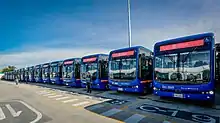
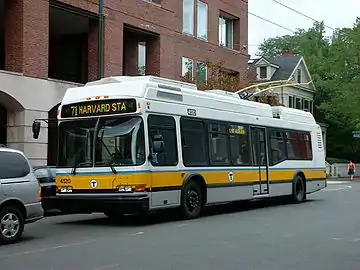

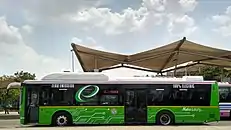

.png.webp)
-3.jpg.webp)
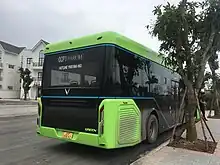
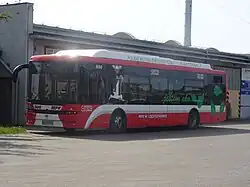
_Arriva_London_New_Routemaster_(19522859218).jpg.webp)